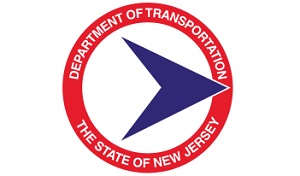The New Jersey Department of Transportation (NJDOT) began accepting applications for several Fiscal Year 2019 State Aid programs on July 26, with applications being accepted from local municipalities though Oct. 8 this year for four main programs.
First, the state’s $151 million Municipal Aid program is aimed at supporting walking and biking, with NJDOT’s goal to award up to 10 percent of the those funds to projects such as pedestrian safety improvements, bikeways and streetscapes.
Second, the $1 million bikeways is intended to fund bicycle projects which create new Bike Path Mileage. It is available to all New Jersey counties and municipalities, NJDOT said, with the goal of achieving 1,000 miles of dedicated bikeways in New Jersey. Special consideration will be given to bikeways that are physically separated from motorized vehicular traffic by an open space or barrier, but on-road bike lanes and other bike routes and facilities are also eligible for funding, the agency added.
 The third is the “Safe Streets to Transit,” which is offering $1 million in grants to encourage counties and municipalities to construct safe and accessible pedestrian linkages to transit facilities, in order to promote increased usage of transit by all segments of the population.
The third is the “Safe Streets to Transit,” which is offering $1 million in grants to encourage counties and municipalities to construct safe and accessible pedestrian linkages to transit facilities, in order to promote increased usage of transit by all segments of the population.
Finally, there is the $1 million “Transit Village” program that seeks to award grants to traditional and non-traditional transportation projects alike to enhance walking, biking and/or transit ridership within a half mile of a transit facility. However, only New Jersey municipalities that have been designated as Transit Villages by NJDOT and the inter-agency Transit Village Task Force are eligible to apply for those funds.
The eligible town list can be found at: http://www.state.nj.us/transportation/business/localaid/transitvillagef.shtm.
“These programs allow our counties and municipalities to be well positioned to design and construct important local projects without the need to impact property taxes,” noted NJDOT Commissioner Diane Gutierrez-Scaccetti in a statement. “The success of local governments in building projects and spending the additional funding will improve the quality of life not only for local residents, but for the entire state.”
 Nation
Nation


